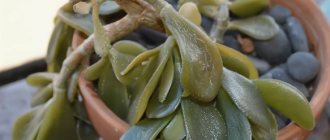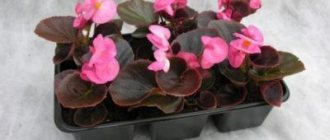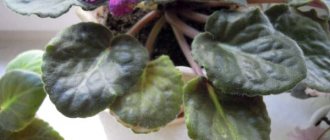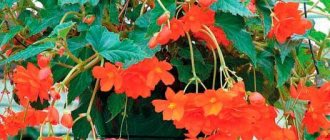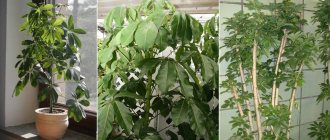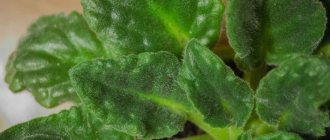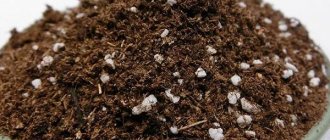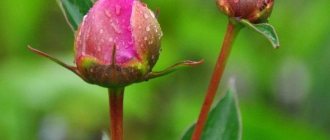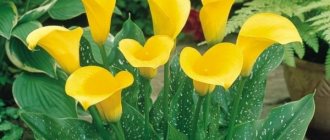The aristocratic patterns of deciduous begonias and the bright caps of flowering species are united not only by belonging to the same genus, but also by the status of plants that need careful care. The variety of begonias can be discovered endlessly. Differing in requirements for conditions, but similar in care and their capriciousness, begonias tend to react violently to any mistakes. Diseases, pests, and problems they all have in common. And most often they are provoked by mistakes in fertilizing, improper watering and lighting, and cold drafts.
Why do begonias get sick? © instax2309
How often does home begonia get sick?
With proper care, optimal temperature conditions, lighting and watering, the risk of diseases and pest damage in domestic begonias is minimal. An additional factor of infection can be poor-quality soil and diseased neighboring plants.
Healthy begonia - home decoration
Methods of combating diseases and pests of indoor begonia are varied: from simple and gentle to the most radical. It all depends on the type of disease and the degree of damage to the plant.
Important! In some cases, it is enough to move the pot with begonia to a more suitable place. In other cases, recovery requires measures in several stages.
Below are the main diseases of indoor begonia that gardeners encounter.
Breeding Features
To bloom abundantly and maintain the “health” of begonias, warm but moist air and an optimal amount of water are needed.
The plant feels great when grown indoors, but if certain rules are not followed, it can get sick. To avoid yellowing or drying of the foliage, you need to follow the basic recommendations for caring for the flower. The following factors are detrimental to him.
Direct exposure to sunlight. You should not place the pot with begonia on the windowsill on the sunny side. Insufficient air humidity. Under such conditions, the leaves gradually turn yellow. This can lead to the death of the plant. To increase air humidity, it is recommended to use household electric humidifiers or hand-held sprayers.
It is important that drops of water do not fall on the foliage, as they can leave stains. Incorrect watering. Begonia is a moisture-loving plant that needs to be watered as it dries out.
There is no need to fill the soil; it is enough for it to be saturated with moisture 2 cm deep. Temperature changes. Begonia loves warmth. It grows and blooms well at ambient temperatures from +16 to +23 degrees. Dense and unfertilized soil.
However, even if the care conditions are met, begonia owners may experience drying of the flower. Let's consider situations when you should be wary and take measures to save the plant.
Leaves turn yellow, dry and curl
The leaves of a rose are drying up - what could be the reasons?
There may be several reasons for leaves turning yellow and falling. Methods for solving the problem depend on the source.
- Begonia is not watered enough or watered with cold tap water without first settling. Regular, abundant watering with room temperature water that has stood for 48 hours will solve the problem.
- The plant was moved to another place, for example, from a room to a balcony. Sharp changes in temperature, humidity, and lighting levels in some begonias lead to drying out of the edges and curling of the leaves. It is necessary to return the flower to its original place by feeding and removing dead foliage.
- Air dried by central heating radiators will also cause leaves to yellow and wilt. Spraying or a household humidifier will help cope with low air humidity.
- Home begonia prefers bright but diffused sunlight. If there is excessive or insufficient lighting, its leaves will turn yellow and fall off. The salvation will be the organization of an optimal light regime: either additional lighting or shading from the bright sun. In hot weather in summer and when the air is excessively dry in winter, the preparations epin or zircon can be used to activate the vitality of the plant.
Drying begonia leaves
Measures to combat ticks.
Acaricidal drugs are effective against ticks. There are a lot of them. Sold in garden centers, hypermarkets, shops for summer residents, etc. Prepare the working solution according to the manufacturer's instructions. Usually the dosage is indicated in general terms. Because there is no point in developing a product for a specific type. Treatment is carried out by spraying. For complete destruction, 2 treatments are needed at weekly intervals. But if you live on the first or second floors, grow plants that are at risk (Saintpaulias, begonias, roses, etc.), then you need preventive treatments against this group of pests throughout the spring-summer season. Because in this case there is a constant source of new infection.
The buds are falling
Gloxinia diseases - what to do, how to deal with them
Caring for begonia is quite simple, but mistakes in it can lead to the fact that the plant can shed leaves, flowers, and unopened buds. To help the plant, you need to determine why the begonia is dropping its buds and take measures to eliminate them.
- Unsuitable conditions of detention. Too dry air, roots rotten from excessive watering, direct sunlight, temperatures above 23 °C in summer and below 16 °C in winter are the main reasons why begonia flowers and buds fall off.
- Lack of nutrients. The problem can be solved by fertilizing with complex fertilizers, for example, Kemira Lux. When feeding flowering and preparing to flower begonias, exclude nitrogen; during this period, plants need phosphorus and potassium. Changing the soil will also be beneficial. The ideal composition is considered to be equal parts of turf, coniferous and leaf soil with the addition of small amounts of peat and sand.
- Falling buds can be caused by pests and diseases. The most common are gray rot and powdery mildew. To avoid their appearance, you need to observe the temperature and humidity conditions. Fungicides should be used for control. The appearance of pests such as aphids and spider mites can be another reason why tuberous begonia buds fall off. Parasites, sucking the juices from the leaves, lead to oppression of the plant, and the begonia can drop its buds. Insecticides and acaricides will help to cope with them.
Measures to combat fungi.
The best option is to avoid defeat. Because by the time the fungus is discovered, it is most often too late to treat. To do this, do not grow plants in too damp areas. Spray flowers only if the temperature is above +30⁰C or at least not every day. Monitor how quickly the soil in the pot dries out. If the substrate dries out for more than a week, then there is a possibility of fungal spores germinating. Fungicides are used for control. They come in 2 types: contact and systemic action. To treat bulbs and tubers before planting, contact fungicides are usually used. In all other cases - systemic. Please read the instructions carefully before use. Not every fungicide can be effective under the conditions of your agricultural technology.
Spots on leaves
The appearance of spots on the leaf blades means that the flower is experiencing discomfort. If the plant is helped in a timely manner, the development of the disease and its death can be avoided.
Begonia has brown spots on leaves
What indoor plants must be in the house?
There may be several reasons:
- insufficient watering and low air humidity. In this case, it is worth changing the watering scheme and increasing air humidity;
- fungal infection of the substrate. In this case, brown spots appear on the begonia's leaves, which eventually become covered with a gray coating. The diseased plant should be isolated, the soil should be changed and the plant should be treated with a fungicide.
White spots
They appear due to diseases:
- white weeping spots with a gray coating - gray rot. Isolation, fungicide and microclimate optimization will help;
- white powdery spots are a sign of powdery mildew. Control methods are the same as for other fungal diseases.
Yellow spots and rings accompanied by leaf deformation
Unfortunately, the begonia is infected with the cucumber mosaic virus.
Note! There are no means to combat this disease. The plant needs to be destroyed urgently.
Wrong place
Any loss of color in begonias - yellowing, blanching, browning of leaves or loss of color in flowers - always indicates that the begonias are missing something: fertilizing, moisture, light. Be sure to check whether the type of fertilizer and the frequency of its application corresponds to the requirements of a particular type.
A rapid loss of decorativeness, flowers, drying out or browning of leaves, changes in color in different parts of the bush, the appearance of spots may indicate the wrong location of the begonia: not a single begonia likes a draft, and especially a cold one.
Any begonias - both beautifully flowering and deciduous - cannot tolerate direct sun. They bush better, develop more luxuriantly in good light, and tolerate only slight shading ( rex ). The ideal place is on the east, west window sill or near the south window (on the north - only in summer).
In the winter, so that the plants do not lose leaves, become discolored or stretch out, it is better to adjust and increase the lighting.
Diseases of flowering begonia
During the flowering period, begonias are even more demanding in terms of conditions of maintenance and care. The formation of buds, flowering, and the formation of seeds require increased expenditure of vitality. Even a slight deviation from the norm will cause illness.
- Withered or dry leaves - non-compliance with the humidity regime. A native of the humid tropics, it is very demanding in terms of humidity, but is not resistant to rot that appears as a result of excessive watering.
- Yellow leaves - excessive moisture with lack of heat. With this regime, begonias have problems with flowering, the leaves may turn red and curl.
- Root rot is an indicator of excessive watering. Dry the soil urgently and optimize watering, otherwise the flower will die.
- Rotting of leaves, buds, buds. If the bases of the stems are healthy, it means that the plant is sprayed too often, which is contraindicated.
- Flowering begonias are affected by downy mildew (pernosporosis). Spores of this type of fungus are activated by increased humidity of the air and substrate. When the disease occurs, white fluffy spots appear on the leaves, quickly spreading throughout the plant and leading to the death of the shoots.
Reproduction
Begonia everflowering is propagated vegetatively - by cuttings and also by seeds .
It should be borne in mind that varieties with simple flowers completely retain all their characteristics when propagated by seed , while double forms lose them.
To preserve the splendor and color of double flowers , you need to use exclusively vegetative propagation .
Propagation by stem cuttings
Use spring and summer cuttings about 10 cm long, which have 2-3 pairs of leaves. The sections are dried and the lower leaves are removed.
You can pre-root the cuttings in water, treat the lower cuts with rooting stimulants, or immediately plant them in regular soil with additional sand.
The planting is covered with plastic film, kept warm (+ 22-25ºС ), ventilated and moistened.
After the formation of the root system and the formation of new shoots (within about a month ), the cuttings are planted in separate containers with a regular soil mixture.
Propagation by seeds
This method is often used for growing seedlings in open ground, in annual mode.
At the end of winter, small seeds are placed on the surface of the soil mixture, sprayed with water, covered with plastic film, ventilated, and kept at a temperature of 22-25ºC and good lighting .
Shoots appear in 2-3 weeks.
After the formation of two or three true leaves, the seedlings carefully dive, reduce the temperature to 17-18ºC and limit watering .
As they grow, they are seated. Flowering can begin as early as 12-20 weeks.
Leaves, stems, roots rot
Why does begonia rot? Various types of rot are fungal in nature and can be localized on different parts of the plant. Some fungi take over the plant within a few days, and it is almost impossible to fight them. In simpler cases, isolating the flower and prompt treatment with fungicides will help.
The cause of putrefactive processes is a violation of growing conditions:
- excess air humidity;
- when spraying, drops of water fall on leaves, petioles and growing points;
- poured substrate;
- lack of ventilation;
- insufficient lighting;
- indoor air temperature is below 19 °C in summer and 16 °C in winter.
Note! After identifying the reasons, you need to draw the right conclusions and correct the shortcomings in the maintenance of begonias.
Other diseases
Begonias have several specific diseases and reactions to the environment:
| Problem | Solution |
| Young leaves are too small and pale | Feeding with nitrogen fertilizer is required. |
| Begonia leaves curl | Leaves begin to curl when it is too hot and dry. You need to adjust the settings. |
| The plant standing in the kitchen has drooped | Poisoning by natural gas combustion products. You need to move the flower to a safe place. |
| Leaves fall in winter | Too cold. The temperature needs to be adjusted. |
| Bubble spots. The leaves turn black. | Bacterial wilt. It needs to be treated with an antibacterial drug. |
Useful video
In this video you will learn about Begonia diseases:
Useful material Below is a list of articles that may be of interest to you.
If you find an error, please select a piece of text and press Ctrl+Enter.
Begonia diseases can quickly turn a gorgeous flower into an unsightly, tortured specimen. Therefore, for flower growers who purchase an ornamental plant called begonia, diseases and the fight against them become one of the main problems.
Diseases that cannot be cured
Begonias have a number of diseases that cannot be treated. If their symptoms are detected, the plant should be destroyed, the pots and window sills should be disinfected, and neighboring flowers should be quarantined.
Incurable diseases include:
- nematode infection. Discolored leaves, sagging appears on the roots;
- cucumber mosaic. Yellow spots and rings. Leaves are deformed.
Cucumber mosaic
Diseases due to pests and their destruction
Begonia is affected by a variety of pests.
- Spider mite. The leaves become dull, lose color, begin to fade, and cobwebs appear on the lower surface. Treatment with systemic insecticides will solve the problem.
- Nematodes. Their appearance will be indicated by swellings on the roots and lifeless leaves. It is better to destroy the plant immediately.
- Aphid. If the infection is severe, all leaves and buds may fall off. The plant will be saved by treating it with an insecticide and a strong soap solution.
- Greenhouse whitefly. Small white butterflies feeding on plant sap. 40 g of laundry soap dissolved in 10 liters of water will help destroy the pest. Leaves with eggs and larvae must be destroyed before processing.
Whitefly on begonia
- Greenhouse thrips. The plant loses its decorative effect, becomes faded, lifeless, and sheds its leaves. You can fight it with a soap solution or insecticides.
- False shield. The presence of a pest can be judged by the appearance of the insects themselves (brown scales) and sticky products of their metabolic activity on the leaves. The fight against scale insects is not easy, since the pests are protected by shields. A combination of mechanical removal with a brush and treatment with an insecticide will give the result.
Note! Most diseases of domestic begonia are provoked by an unsuitable microclimate, which appears as a result of improper, inappropriate care. The first step in the treatment of such diseases should be a revision of agricultural practices and methods.
Traditional methods of pest control
A folk method for getting rid of aphids and spider mites: chop 15 g of onions and leave in 1 liter of water for about a week. Treat the damaged begonia with the strained solution every five days until the pests are completely destroyed.
An infusion of shag mixed with celandine juice will help against thrips and aphids.
Aphids on leaves
The false scale insect will be destroyed by an alcohol solution with soap: 15 g of liquid soap, 10 ml of alcohol and 1 liter of warm water. The solution is very aggressive, therefore, in order not to burn the plant, you need to conduct a sensitivity test on a separate leaf.
Begonia is a whimsical plant and is not easy to grow. However, if you study and follow the rules of care and maintenance, then begonia will delight you with the beauty of its flowers and foliage for a long time.
Irrigation filter Karcher
666 ₽ More details
Hose Karcher “PrimoFlex”, 1/2″, 20 m. 2.645-138.0
1269 ₽ More details
Karcher high pressure washers
Effective herbal preparations
Many common native plant species have fungicidal, bactericidal and insecticidal properties.
They are safe for humans and animals, and are not as harmful to bees, bumblebees and beneficial microorganisms as compared to chemicals.
We bring to your attention a table with the most effective herbal preparations for combating begonia diseases and pests.
Table 2. Preparations from plants for pest and disease control
| Plant | Preparation of infusion (for 10 liters of water) | Application technology | Disease or pests |
| Marigold | Dry crushed raw materials (1–2 kg) are infused for 48 hours and filtered. | Water the entire plant three times a day. | Fungal diseases. |
| White mustard | The powder (100 g) is infused for two days, tightly sealed. | Spray the soil. | Slugs and snails. |
| Potato |
| Spray the entire plant in the evening. |
|
| Dandelion officinalis |
| Spray at the first appearance of insects. |
|
| Scots pine needles, crushed | Mulch the soil. | Gray rot. |
To prevent the tender leaves of begonia from getting burned, herbal preparations are used in strict dosage.
Important: In the event of a mass outbreak of disease or parasite invasion, herbal infusions and decoctions are not effective enough. A reasonable combination of agricultural technology with measures to protect the plant from diseases and parasites will help preserve the decorative appearance of begonias.
A reasonable combination of agricultural technology with measures to protect the plant from diseases and parasites will help preserve the decorative appearance of begonias.

